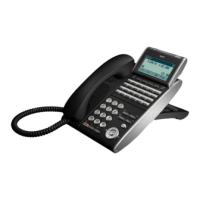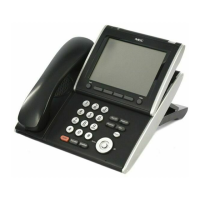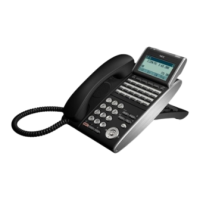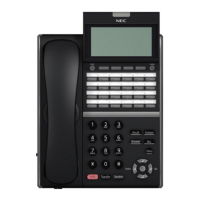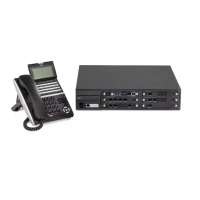6.3 Layer 3 QoS
QoS is most commonly implemented at Layer 3. This allows the VoIP packets to be prioritized by
routers, before they are forwarded to their next hop.
Layer 3 QoS uses the Type of Service (ToS) field of the IP packet. This is an 8-bit field in the header of
the IP packet. The field can be used by Diffserv or IP Precedence. Although these are two different
standards, the actual field in the IP packet is the same – Only the method of evaluating the bits differs.
QoS does not function only by using the ToS field (i.e., Marking the VoIP packets). It is an end-to-end
process and requires configuration on all networking devices.
Packet Marking is the first step in this process and is often the only step that the NEC dealer performs.
Table 6-2 Layer 3 QoS Example
Protocol Structure - IP/Pv4 Header (Internet Protocol Version 4)
4 Bits 4 Bits 8 Bits 16 Bits
Version IHL Type of Service Total Length
Identification Flags Fragment Offset
Time to Live Protocol Header Checksum
Source Address
Destination Address
Option + Padding
Data
Type of Service Field (Diffserv)
6 Bits 2 Bits
Differentiated Services Code Point ECN (Not QoS related)
Type of Service Field (IP Precedence - Ref. RFC 1349)
3 Bits 1 Bit 1 Bit 1 Bit 1 Bit 1 Bit
IP Precedence Value Delay Throughput Reliability Cost MBZ (must be zero)
Listed below are the fields used in Table 6-2 Layer 3 QoS Example on page 6-14.
Version – the version of IP currently used.
IP Header Length (IHL) – datagram header length. Points to the beginning of the data. The minimum
value for a correct header is 5.
Type-of-Service – Indicates the quality of service desired by specifying how an upper-layer protocol
would like a current datagram to be handled, and assigns datagrams various levels of importance.
This field is used for the assignment of Precedence, Delay, Throughput and Reliability.
Total Length – Specifies the length, in bytes, of the entire IP packet, including the data and header.
The maximum length specified by this field is 65,535 bytes. Typically, hosts are prepared to accept
datagrams up to 576 bytes.
Identification – Contains an integer that identifies the current datagram. This field is assigned by
sender to help receiver to assemble the datagram fragments.
Flags – Consists of a 3-bit field of which the two low-order (least-significant) bits control fragmentation.
The low-order bit specifies whether the packet can be fragmented. The middle bit specifies whether
SL2100
ISSUE 1.0
6-14
Network Design Considerations

